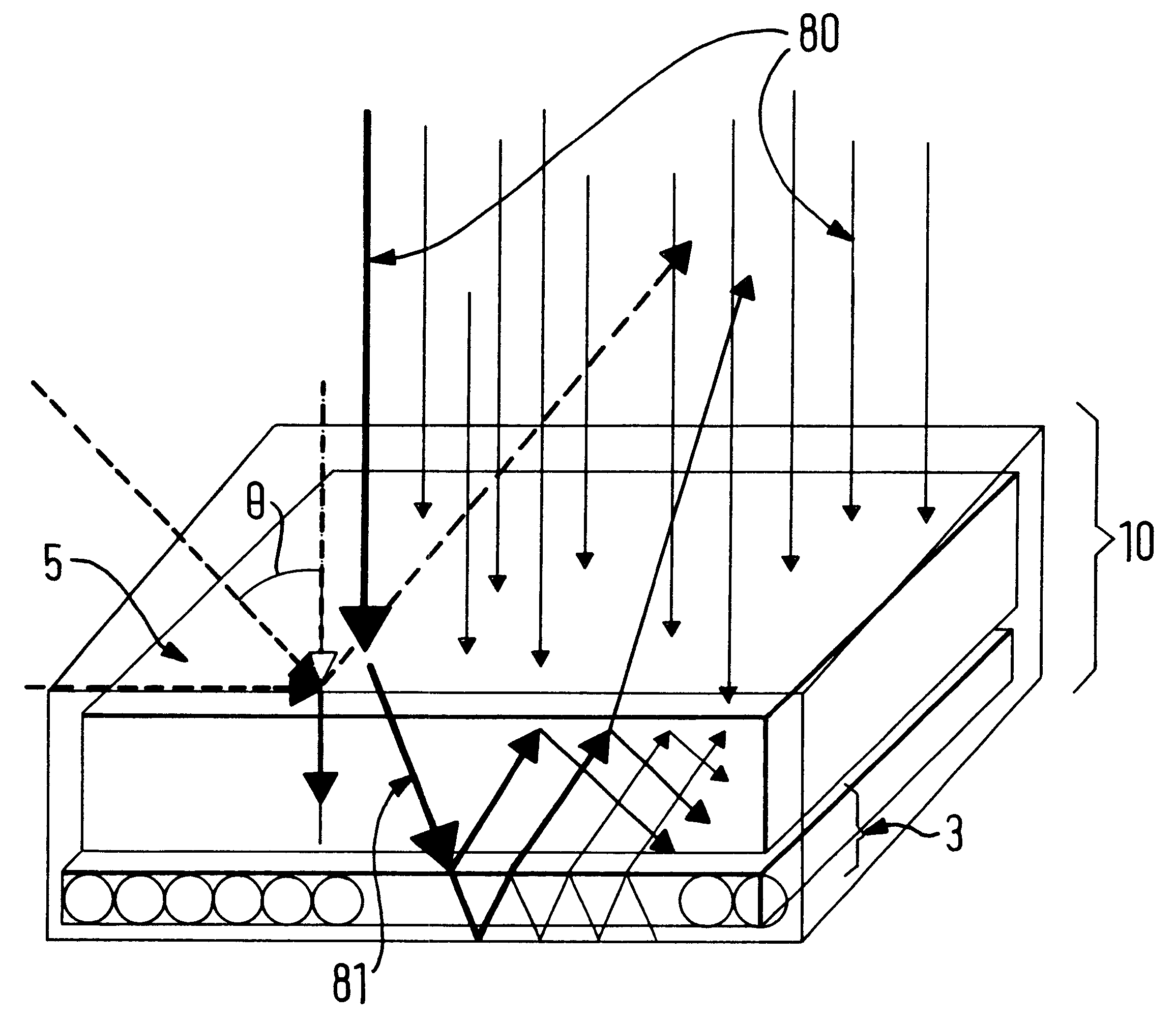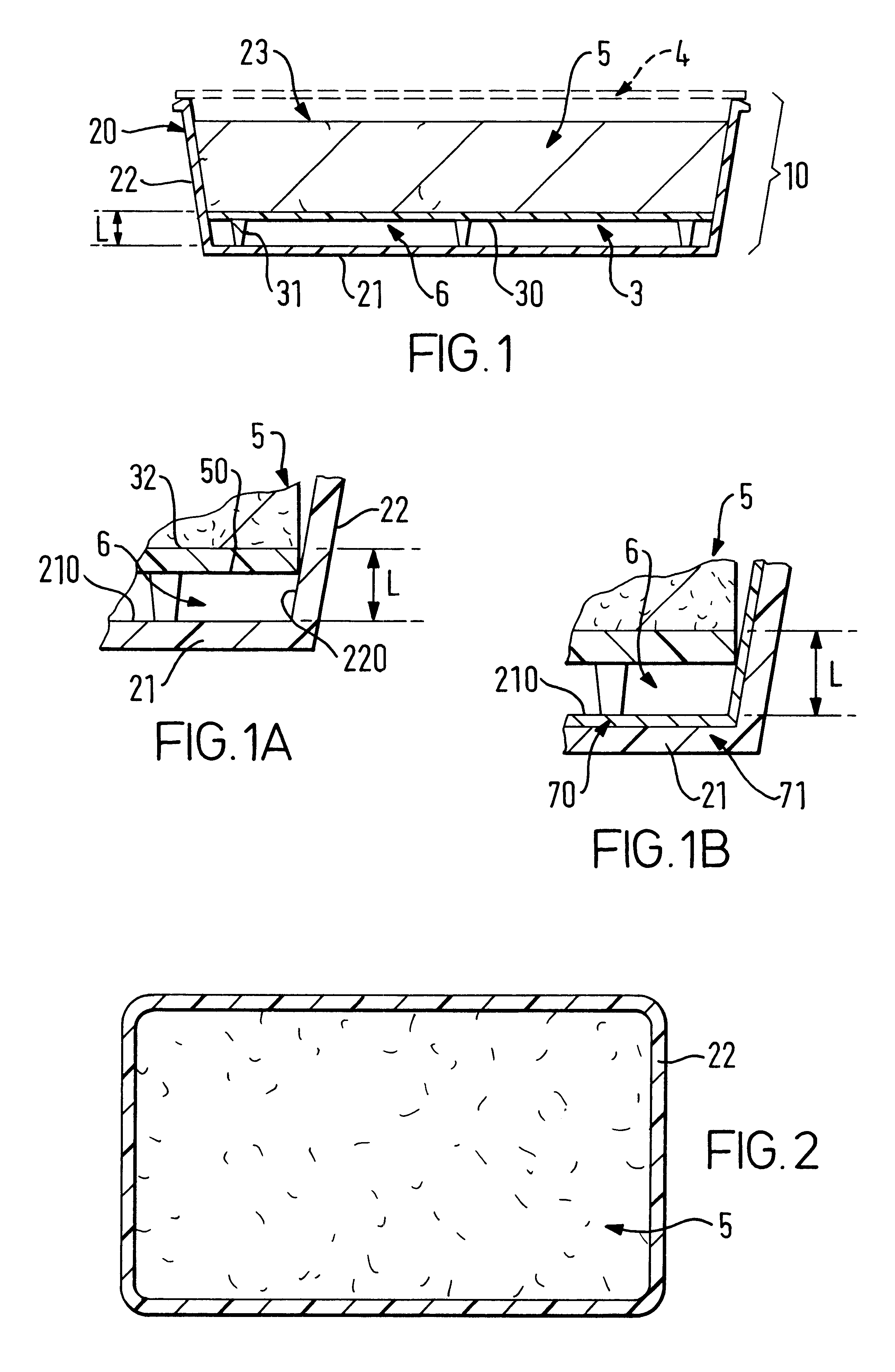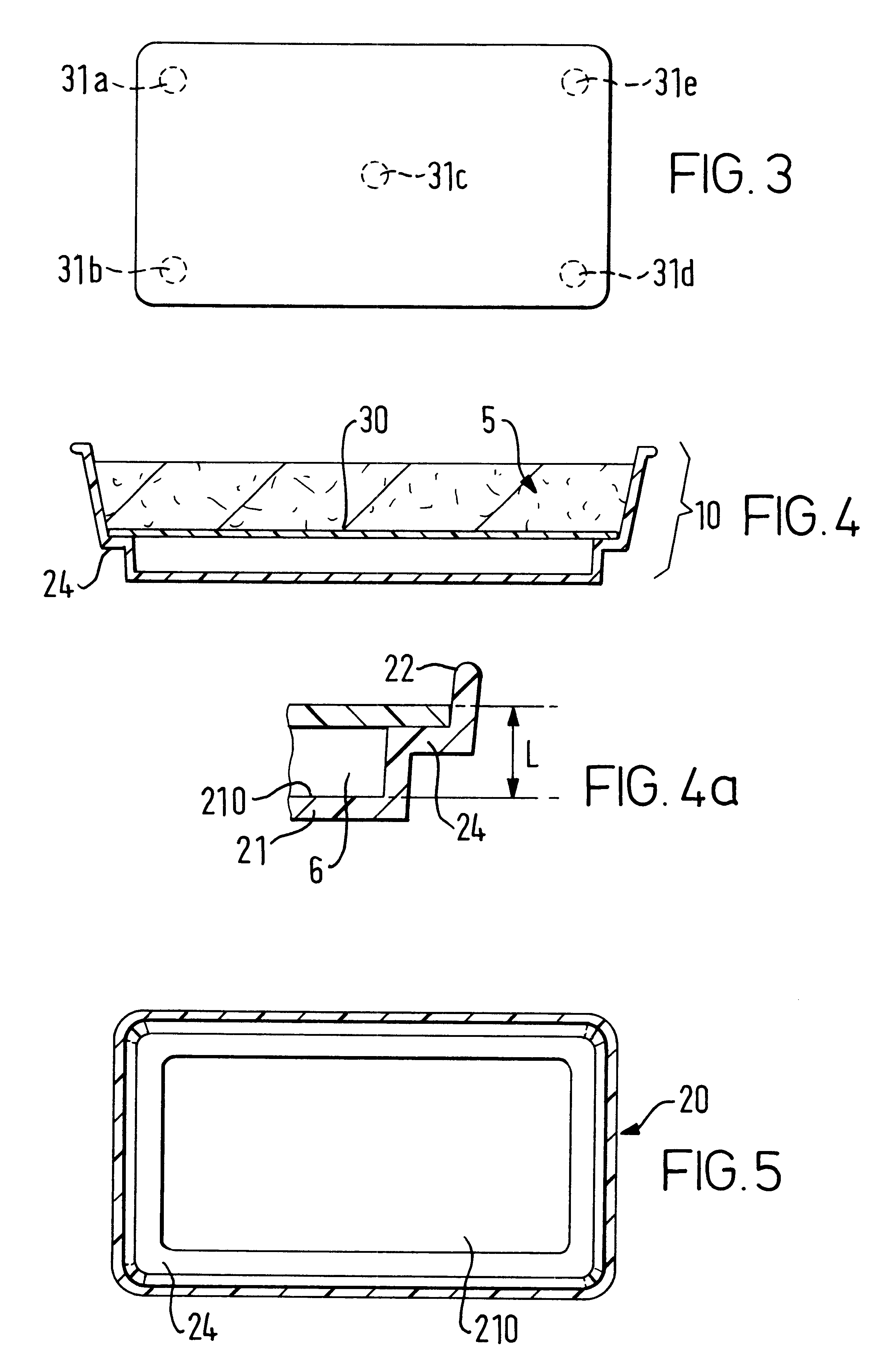Container for heating rapidly and evenly frozen foods in a microwave oven
a technology for fast and evenly frozen foods, which is applied in the direction of electric/magnetic/electromagnetic heating, packaging foodstuffs, packaged goods, etc., can solve the problems of food temperature gradient, microwave reheating has been excessively long, and the use of microwave ovens is less attractiv
- Summary
- Abstract
- Description
- Claims
- Application Information
AI Technical Summary
Problems solved by technology
Method used
Image
Examples
Embodiment Construction
The invention is further defined by reference to the following examples describing in detail the preparation of the container for microwave cooking according to the invention. The examples are representative, and they should not be construed to limit the scope of the invention in any way.
Microwave reheating trials performed according to the embodiment depicted in FIG. 6, on frozen lasagna products, demonstrate the superior heating that is obtainable with the container of the invention. Glass beads, 10 mm in diameter, were used to obtain a height elevation of the product with respect to the bottom surface of an aluminum tray. In addition, the four corners of the aluminum tray were covered with aluminum patches having a triangular shape with side lengths, along the edges of the tray, being about 6.5 cm. The reason for the patches was to increase the reheating regime of all the lasagna components, including the bechamel sauce, in the corners. The frozen lasagna weighed about 1 kg. The ...
PUM
 Login to View More
Login to View More Abstract
Description
Claims
Application Information
 Login to View More
Login to View More - R&D
- Intellectual Property
- Life Sciences
- Materials
- Tech Scout
- Unparalleled Data Quality
- Higher Quality Content
- 60% Fewer Hallucinations
Browse by: Latest US Patents, China's latest patents, Technical Efficacy Thesaurus, Application Domain, Technology Topic, Popular Technical Reports.
© 2025 PatSnap. All rights reserved.Legal|Privacy policy|Modern Slavery Act Transparency Statement|Sitemap|About US| Contact US: help@patsnap.com



